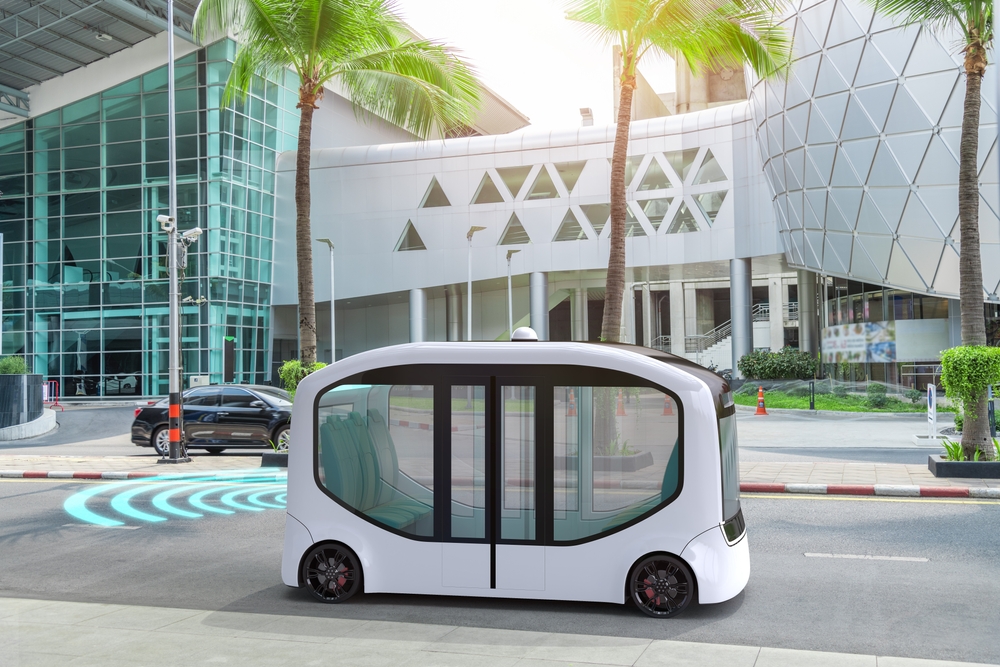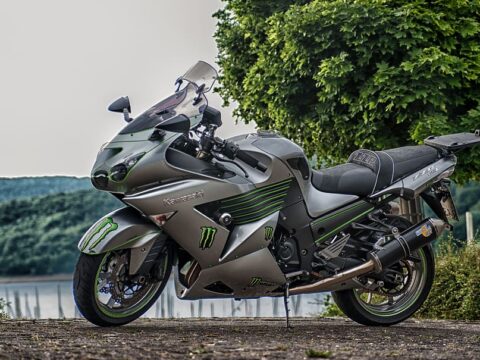As cities around the world grow more congested, the need for smarter, more efficient transportation solutions has never been greater. Autonomous vehicles are at the forefront of this transformation, offering innovative ways to streamline urban commuting. From self-driving shuttles to advanced traffic management systems, these 17 cutting-edge innovations are set to revolutionize how we move through our cities, making travel faster, safer, and more sustainable.
Contents
Self-Driving Shuttles

Autonomous, electric shuttles provide a reliable, energy-efficient alternative to traditional public transport. They can follow fixed routes in urban areas, reducing congestion and offering a cost-effective solution for last-mile transportation. With no human drivers, they operate continuously, offering frequent, seamless rides, especially in transit hubs or business districts.
Robotaxis

Robotaxis eliminate the need for human drivers in ride-hailing services like Uber or Lyft. Using advanced AI and sensors, they provide safe, on-demand transport 24/7. Their flexibility, combined with real-time route optimization, makes urban mobility faster and more convenient, reducing the number of cars on the road and lowering emissions.
Autonomous Delivery Vehicles

These self-driving delivery vehicles are designed to carry goods rather than people, helping to reduce traffic caused by delivery trucks in crowded cities. They ensure faster, more reliable deliveries of groceries and e-commerce orders while reducing the carbon footprint, especially when combined with electric vehicle technology.
Autonomous Buses

Driverless buses can revolutionize public transit by offering consistent, efficient service on fixed urban routes. Without driver costs and human limitations, these buses can operate continuously, leading to fewer delays and more frequent service. Advanced sensors and AI enable these buses to safely navigate dense traffic and adjust speeds in real-time.
Autonomous Ride-Sharing

Self-driving ride-sharing vehicles reduce traffic congestion by allowing multiple passengers to share rides without the need for a human driver. This not only decreases emissions but also lowers transport costs. With dynamic routing, these vehicles can adjust paths based on real-time traffic and passenger demand.
Self-Parking Cars

Self-parking cars save time and space by autonomously finding and parking in the most efficient spots. This reduces urban space requirements for parking lots and garages, freeing up land for other uses. These vehicles also eliminate the need for drivers to circle around searching for parking, reducing traffic and emissions.
Smart Traffic Management

AI-driven traffic management systems coordinate the movement of autonomous vehicles to avoid congestion, prevent accidents, and optimize traffic flow. By using real-time data and predictive algorithms, these systems improve road efficiency, reduce emissions, and ensure smoother commutes in urban environments.
Autonomous Cargo Pods

Designed for urban logistics, these driverless cargo pods offer a solution for transporting goods between distribution centers and retail locations within cities. By taking trucks off the road, they reduce traffic congestion and emissions while ensuring faster, more efficient delivery operations.
Last-Mile Solutions

Autonomous vehicles handling last-mile deliveries are critical for urban logistics. These small, nimble vehicles can navigate crowded streets and deliver packages or food directly to customers, helping to reduce delivery costs, traffic congestion, and pollution, especially in dense urban neighborhoods.
V2X Communication

Vehicle-to-everything (V2X) communication allows autonomous vehicles to interact with traffic lights, road signs, other vehicles, and pedestrians. This real-time data exchange optimizes traffic flow, reduces accidents, and enhances safety, making urban commutes faster and more efficient.
Autonomous Emergency Vehicles

Driverless ambulances and fire trucks can respond more quickly to emergencies, thanks to advanced navigation systems that allow them to find optimal routes through congested urban areas. These vehicles also reduce human error and can operate 24/7 without fatigue, improving emergency response times.
Automated Parking Garages

These robotic systems park and retrieve cars autonomously, maximizing space efficiency in urban parking facilities. By eliminating the need for driving lanes and reducing the time spent searching for parking, automated garages can significantly decrease congestion and improve land use in crowded cities.
Pedestrian Detection Systems

Advanced pedestrian detection systems enable autonomous vehicles to identify and avoid pedestrians, even in complex urban environments. Using a combination of cameras, radar, and AI, these systems make streets safer for both commuters and pedestrians, reducing the likelihood of accidents.
Traffic Jam Assist

This feature allows autonomous vehicles to manage driving during heavy traffic, minimizing stop-and-go movements, improving fuel efficiency, and reducing commuter stress. It’s particularly useful in cities with frequent traffic jams, helping to ensure smoother and faster commutes even in congested conditions.
Autonomous Public Transport Pods

These small, driverless pods offer personalized urban transit options by providing on-demand transportation for one or two passengers. They are ideal for short trips within city centers or neighborhoods, reducing the need for larger vehicles and contributing to a more efficient urban transport system.
Smart Road Infrastructure

Roads equipped with sensors and communication systems can actively manage and guide autonomous vehicles. Smart roadways can adjust traffic lights, detect accidents, and monitor traffic patterns in real-time, ensuring smoother traffic flow and increasing safety for all road users
Highway Autopilot Systems

Advanced autopilot systems allow vehicles to handle long stretches of highway driving autonomously, reducing driver fatigue and accidents. These systems make commuting on highways smoother and more efficient, improving traffic flow and safety while reducing the cognitive load on human drivers.
This article originally appeared in MyCarMakesNoise.
More from MyCarMakesNoise
15 Car Launches from the 2000s That Flopped Hard

The 2000s witnessed a surge of innovation and fierce competition in the automotive industry. Manufacturers introduced cutting-edge technologies and bold designs, aiming to capture the market’s attention. Read More
15 Luxurious SUVs That Deliver on Comfort and Class

In the realm of automotive excellence, luxury SUVs stand as the epitome of comfort and sophistication. These vehicles seamlessly blend high-performance capabilities with opulent interiors, creating an unmatched driving experience. Read More
10 Public Transit Systems That Were Shut Down and Forgotten

Public transportation systems have long been the lifeblood of bustling urban centers, providing essential connectivity and fostering economic growth. However, as cities evolved and new technologies emerged, many once-thriving transit systems fell into disuse. Read More














